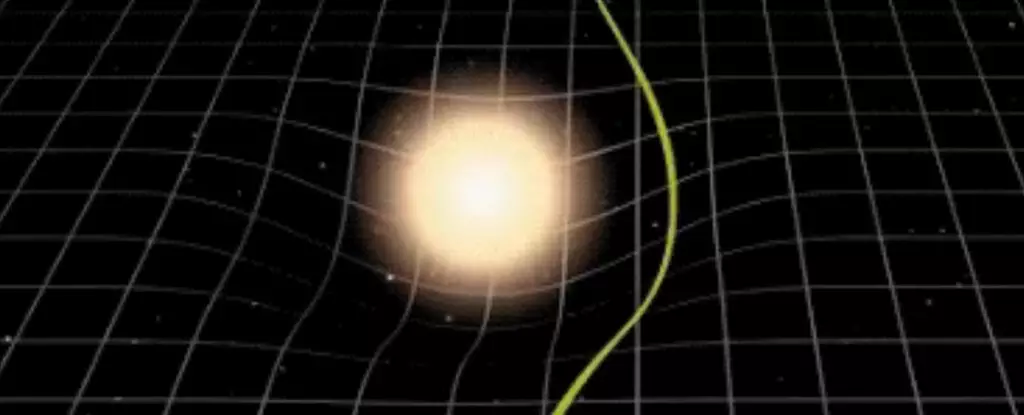In a universe filled with potentially hazardous space debris, the ability to predict the trajectory of asteroids is crucial for the safety of our planet. Asteroids and comets flying through our solar system pose dangers that could lead to catastrophic consequences if they are on a collision course with Earth. The development of predictions and models capable of detecting these objects with as much accuracy as possible has long been paramount for astronomers and astrophysicists alike. The latest advancement in this area revolves around a new mathematical equation capable of providing a clearer understanding of gravitational bending of light (GBL). This equation, conceived by physicist Oscar del Barco Novillo from the University of Murcia, holds promise for not only predicting asteroid movements but also for refining our knowledge of positional astronomy.
Gravitational bending of light refers to the phenomenon where light rays are deflected in the presence of massive objects, like the Sun or planets. This bending can create significant discrepancies between where we perceive an object to be and its actual location in space. Understanding this optical illusion is essential for enhancing the accuracy of positional data pertaining to not only asteroids but also distant stars and celestial mechanics. Del Barco Novillo emphasizes that the new equation he developed offers unprecedented precision in calculating the GBL angle. This improvement is particularly significant as it enables astronomers to more effectively track smaller celestial bodies that could threaten Earth.
Del Barco Novillo’s equation builds on over centuries of theoretical work foundational to gravitational physics. Renowned scientists such as Newton and Einstein explored similar phenomena but were often limited by the available technology and mathematical frameworks of their times. The novel approach recently adopted by Del Barco Novillo introduces a finite distance perspective, which acknowledges that celestial measurements often require more precise handling than the assumptions made under a strictly infinite distance model. This is akin to altering the way we perceive phenomena on Earth – consider how light travels through a glass of water, bent and refracted, revealing a much subtler understanding of spatial relations.
The accuracy of any scientific equation hinges on rigorous validation. Del Barco Novillo verified his equation through an array of complex numerical simulations and by comparing results to existing calculations, including the Shapiro time delay formula. Each verification returned favorable results, affirming the equation’s reliability. Importantly, the implications of this advancement stretch beyond mere asteroid tracking. The equation could prove instrumental for both celestial mechanics and stellar dynamics. For instance, identifying locations of proximate stars, such as Proxima Centauri, could pave the way for future space exploration and may even provide hints about other worlds beyond our solar system.
The applications of this equation are not limited to detecting asteroids. It holds particular promise for projects like the European Space Agency’s Euclid mission, which is dedicated to exploring the mysteries of dark matter and the structure of the cosmos. By improving our understanding of gravitational effects on light, astronomers can better chart the positions of billions of galaxies that lie billions of light-years away. In this vein, Del Barco Novillo suggests that having a more accurate toolkit for understanding celestial mechanics could reshape our interpretation of dark energy and the dynamics of the universe.
The development of this new equation for accurately calculating gravitational bending of light carries significant weight for multiple branches of astronomy and astrophysics. By improving our ability to track asteroids and other minor celestial bodies, del Barco Novillo’s research stands to not only provide crucial early warning against potential threats but also enhance our understanding of the cosmos at large. As humanity continues to navigate the intricacies of space, this breakthrough paves the way for a more nuanced and robust exploration of the universe, ensuring that our caution remains as enlightened as our curiosity.

